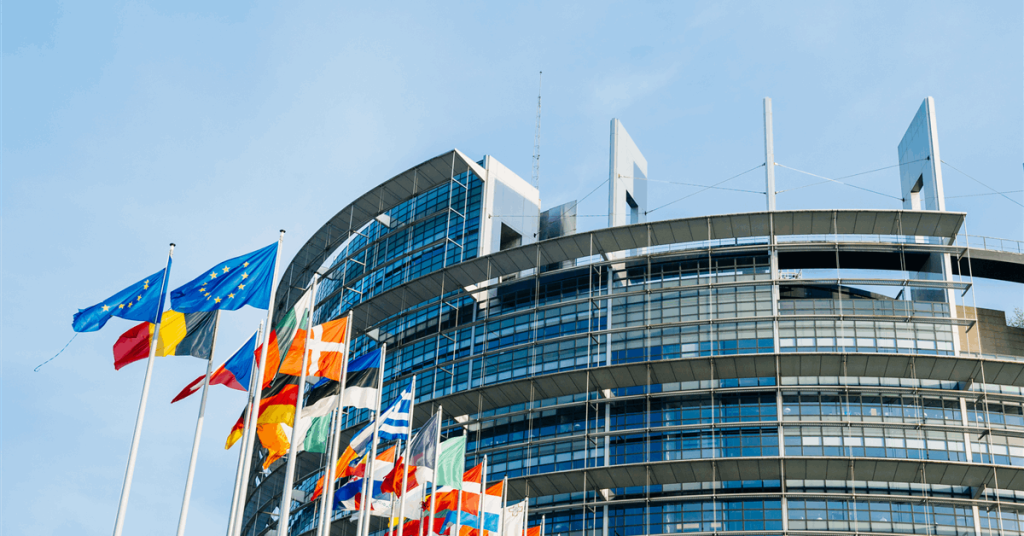Nine lower-income European Union countries have received EUR 3.66 billion ($4.31 billion) from the Modernization Fund to support 34 energy transition projects, officials said Thursday.
This is the biggest disbursement from the Modernization Fund, which has now released a total of EUR 19.1 billion, said a joint statement from the European Commission and the European Investment Bank. It was established 2018 to support 13 lower-income EU nations in their path to climate neutrality by 2050. It is funded by revenue from the auctioning of emission allowances under the EU Emissions Trading System (ETS).
The latest batch of projects “will reduce greenhouse gas (GHG) emissions in the energy, industry and transport sectors, and improve energy efficiency”, the statement said.
“The projects will help the beneficiary Member States to meet their climate and energy targets. They will also strengthen the EU’s industrial competitiveness by supporting modern, efficient and resilient energy infrastructure, fostering innovation and helping to reduce the EU’s imports of fossil fuels”.
Poland was the top recipient in the latest disbursement with EUR 1.33 billion. Poland will use this to support the “development of clear air program supporting energy efficiency improvements and heat source replacements in single-family houses”, the statement said.
Czechia got the second-biggest share with EUR 1.05 billion, which it will spend on projects to store energy from renewable sources.
Romania was the third-highest recipient with EUR 712.3 million, intended for increasing energy efficiency in ETS installations.
Hungary got EUR 181.3 million to improve energy efficiency in public buildings.
Croatia secured EUR 170 million to fund the production of heat from renewable energy sources and implement energy efficiency in heating and cooling systems.
Greece got EUR 113.6 million to replace urban diesel buses with electric ones.
Latvia was awarded EUR 40 million to grow its power grid capacity.
Lithuania got EUR 37 million, to be injected in large-scale energy storage projects.
Slovenia rounded up the latest group of recipients with EUR 19.7 million, meant for the upgrade of the country’s electricity transmission and distribution network to facilitate the integration of renewables.
The other Modernization Fund beneficiary states that were not among the latest cohort are Bulgaria, Estonia, Portugal and Slovakia.
The source of funds, the ETS pollution charge, uses a so-called cap and trade mechanism that sets emission allowances for firms to buy, then trade at their discretion. Member states can allot free allowances but the European Parliament and Council in April 2023 passed reforms on the ETS, rolled out 2005 and is now in its fourth phase (2021-30), that include gradually ending zero-cost emission allowances, or greenhouse gas emissions allowed for companies. Targeted for completion 2034, the phaseout of free allowances starts with a 2.5 percent reduction in 2026.
For the next Modernization Fund disbursals, the 13 countries have until August 12, 2025, to submit priority proposals and September 9, 2025, to file non-priority ones.
“Priority investments focus on modernizing energy systems, reducing GHG emissions in energy, industry and transport, and improving energy efficiency listed in the EU ETS Directive”, the statement said. “All other investments qualifying for the Modernization Fund are considered as non-priority investments subject to additional scrutiny”.
To contact the author, email jov.onsat@rigzone.com
What do you think? We’d love to hear from you, join the conversation on the
Rigzone Energy Network.
The Rigzone Energy Network is a new social experience created for you and all energy professionals to Speak Up about our industry, share knowledge, connect with peers and industry insiders and engage in a professional community that will empower your career in energy.
element
var scriptTag = document.createElement(‘script’);
scriptTag.src = url;
scriptTag.async = true;
scriptTag.onload = implementationCode;
scriptTag.onreadystatechange = implementationCode;
location.appendChild(scriptTag);
};
var div = document.getElementById(‘rigzonelogo’);
div.innerHTML += ” +
‘‘ +
”;
var initJobSearch = function () {
//console.log(“call back”);
}
var addMetaPixel = function () {
if (-1 > -1 || -1 > -1) {
/*Meta Pixel Code*/
!function(f,b,e,v,n,t,s)
{if(f.fbq)return;n=f.fbq=function(){n.callMethod?
n.callMethod.apply(n,arguments):n.queue.push(arguments)};
if(!f._fbq)f._fbq=n;n.push=n;n.loaded=!0;n.version=’2.0′;
n.queue=[];t=b.createElement(e);t.async=!0;
t.src=v;s=b.getElementsByTagName(e)[0];
s.parentNode.insertBefore(t,s)}(window, document,’script’,
‘https://connect.facebook.net/en_US/fbevents.js’);
fbq(‘init’, ‘1517407191885185’);
fbq(‘track’, ‘PageView’);
/*End Meta Pixel Code*/
} else if (0 > -1 && 80 > -1)
{
/*Meta Pixel Code*/
!function(f,b,e,v,n,t,s)
{if(f.fbq)return;n=f.fbq=function(){n.callMethod?
n.callMethod.apply(n,arguments):n.queue.push(arguments)};
if(!f._fbq)f._fbq=n;n.push=n;n.loaded=!0;n.version=’2.0′;
n.queue=[];t=b.createElement(e);t.async=!0;
t.src=v;s=b.getElementsByTagName(e)[0];
s.parentNode.insertBefore(t,s)}(window, document,’script’,
‘https://connect.facebook.net/en_US/fbevents.js’);
fbq(‘init’, ‘1517407191885185’);
fbq(‘track’, ‘PageView’);
/*End Meta Pixel Code*/
}
}
// function gtmFunctionForLayout()
// {
//loadJS(“https://www.googletagmanager.com/gtag/js?id=G-K6ZDLWV6VX”, initJobSearch, document.body);
//}
// window.onload = (e => {
// setTimeout(
// function () {
// document.addEventListener(“DOMContentLoaded”, function () {
// // Select all anchor elements with class ‘ui-tabs-anchor’
// const anchors = document.querySelectorAll(‘a .ui-tabs-anchor’);
// // Loop through each anchor and remove the role attribute if it is set to “presentation”
// anchors.forEach(anchor => {
// if (anchor.getAttribute(‘role’) === ‘presentation’) {
// anchor.removeAttribute(‘role’);
// }
// });
// });
// }
// , 200);
//});

